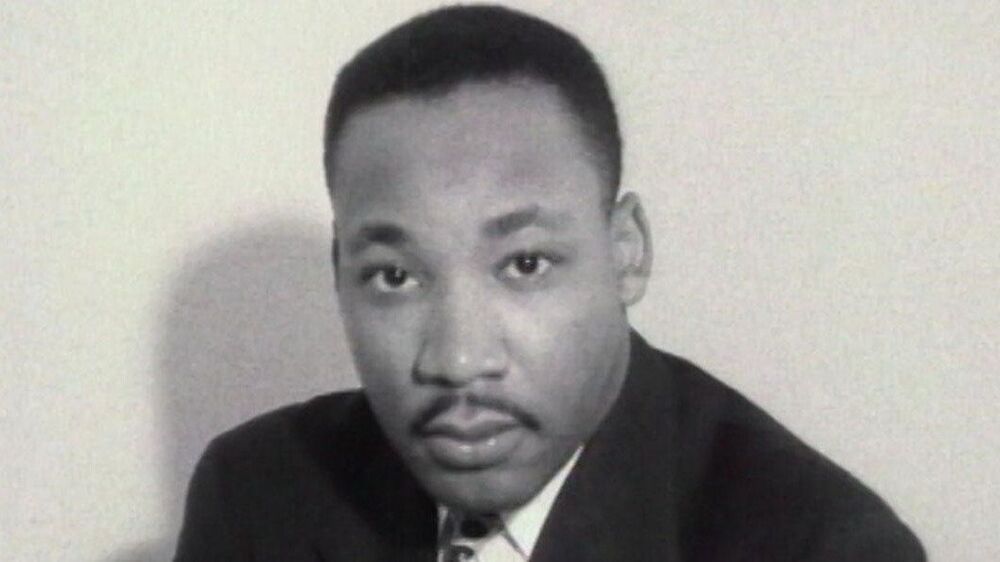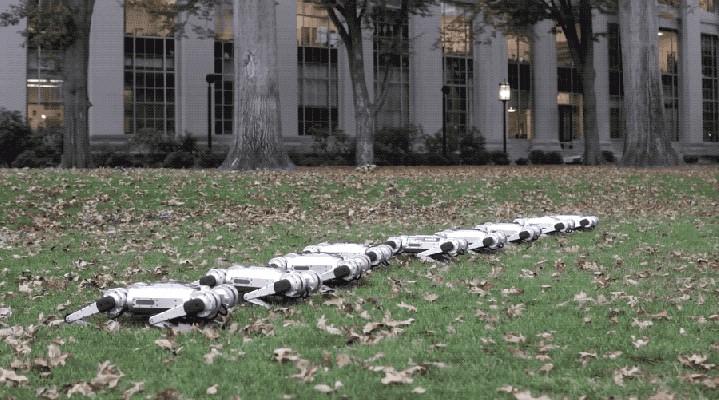Happy MLK Day!
MLK/FBI director Sam Pollard chronicles the FBI’s campaign against Martin Luther King Jr., which included sending King a letter suggesting that he kill himself.


Moscow has revealed a plan to spend $2.4 million on a giant database containing information about every single city resident, including passport numbers, insurance policies, salaries, car registrations – and even their pets.
It will also include work and tax details, school grades, and data from their ‘Troika’ care – Moscow’s unified transport payment system, used on the metro, busses and trains.
The new proposal will undoubtedly increase fears about ever-growing surveillance in the Russian capital, where the number of facial recognition cameras has recently been increased.
In this edition of Future Discussions Ugochukwu discusses with the Head of TAFFD’s Africa on the vision and strategies for creating opportunities for education, technology and empowerment in Africa using the global channel that TAFFDs Africa is creating.
Brenda talks about why she joined TAFFD’s Inc and the amazing work she and her team has been doing to foster the progress of Africa. She equally talks about the 4th Industrial Revolution, what is means for Africa and the work TAFFD’s Africa is doing to prepare young Africans to leverage the opportunities therein.
Subscribe for new episodes.
#futuredisccussions #ugochukwuchukwu #TAFFDs #TAFFDsAFrica
Dr. Halima Benbouza is an Algerian scientist in the field of agronomic sciences and biological engineering.
She received her doctorate in 2004 from the University Agro BioTech Gembloux, Belgium studying Plant Breeding and Genetics and was offered a postdoctoral position to work on a collaborative project with the Agricultural Research Service, United States Department of Agriculture in Stoneville, Mississippi.
Subsequently, Dr. Benbouza was funded by Dow Agro Science to study Fusarium wilt resistance in cotton. In 2009 she was awarded the Special Prize Eric Daugimont et Dominique Van der Rest by the University Agro BioTech Gembloux, Belgium.
Dr. Benbouza is Professor at Batna 1 University where she teaches graduate and postgraduate students in the Institute of Veterinary Medicine and Agronomy. She also supervises Master’s and PhD students.
From 2010–2016, Dr. Benbouza served as inaugural Director of the Biotechnology Research Center (CRBt) in Constantine, appointed by the Ministry of Higher Education and Scientific Research. In 2011, she was appointed by the Algerian government as President of the Intersectoral Commission of Health and Life Sciences. Dr. Benbouza is a member of the Algerian National Council for Research Evaluation and a past member of the Sectorial Permanent Board of the Ministry of Higher Education and Scientific Research.
In 2013, Dr. Benbouza was appointed by the Prime Minister as President of the steering committee of Algeria’s Biotech Pharma project. In 2014 she was honored by the US Embassy in Algiers as one of the “Women in Science Hall of Fame” for her research achievements and her outstanding contribution to promote research activities and advance science in her country.

The arrival of government-operated autonomous police robots does not look like predictions in science fiction movies. An army of robots with gun arms is not kicking down your door to arrest you. Instead, a robot snitch that looks like a rolling trash can is programmed to decide whether a person looks suspicious —and then call the human police on them. Police robots may not be able to hurt people like armed predator drones used in combat— yet —but as history shows, calling the police on someone can prove equally deadly.
Long before the 1987 movie Robocop, even before Karel Čapek invented the word robot in 1920, police have been trying to find ways to be everywhere at once. Widespread security cameras are one solution—but even a blanket of CCTV cameras couldn’t follow a suspect into every nook of public space. Thus, the vision of a police robot continued as a dream, until now. Whether they look like Boston Dynamics’ robodogs or Knightscope’s rolling pickles, robots are coming to a street, shopping mall, or grocery store near you.
The Orwellian menace of snitch robots might not be immediately apparent. Robots are fun. They dance. You can take selfies with them. This is by design. Both police departments and the companies that sell these robots know that their greatest contributions aren’t just surveillance, but also goodwill. In one brochure Knightscope sent to University of California-Hastings, a law school in the center of San Francisco, the company advertises their robot’s activity in a Los Angeles shopping district called The Bloc. It’s unclear if the robot stopped any robberies, but it did garner over 100000 social media impressions and Knightscope claims the robot’s 193 million overall media impressions was worth over $5.8 million. The Bloc held a naming contest for the robot, and said it has a “cool factor” missing from traditional beat cops and security guards.

Summary: The genetics of neurocognitive skills were associated with higher tolerance of risk, delayed fertility, less healthy-risk behavior, and a greater willingness to forgo immediate gratification.
Source: Columbia University.
Noncognitive skills and cognitive abilities are both important contributors to educational attainment — the number of years of formal schooling that a person completes — and lead to success across the life course, according to a new study from an international team led by researchers at Columbia University Mailman School of Public Health, the University of Texas at Austin, and Vrije Universiteit Amsterdam.

Circa 2019
MIT’s Biomimetics Robotics department took a whole herd of its new ‘mini cheetah’ robots out for a group demonstration on campus recently – and the result is an adorable, impressive display of the current state of robotic technology in action.
The school’s students are seen coordinating the actions of 9 of the dog-sized robots running through a range of activities, including coordinated movements, doing flips, springing in slow motion from under piles of fall leaves, and even playing soccer.
The mini cheetah weights just 20 lbs, and its design was revealed for the first time earlier this year by a team of robot developers working at MIT’s Department of Mechanical Engineering. The mini cheetah is a shrunk-down version of the Cheetah 3, a much larger and more expensive to produce robot that is far less light on its feet, and not quite so customizable.
Executive director & co-founder of kiss the ground, and producer of kiss the ground the movie, discussing regenerative agriculture for planetary regeneration.
Ryland Engelhart, is Executive Director & Co-Founder of Kiss The Ground (https://kisstheground.com/), a non-profit organization dedicated to planetary regeneration, and is the producer of Kiss The Ground, the Movie, recently released on Netflix.
Mr. Engelhart has spent the last 15 years as an entrepreneur working in hospitality and building a family business of organic, plant-based restaurants called Cafe Gratitude and Gracias Madre, located in Southern California.
He is also a co-creator of the award-winning, documentary film, “May I Be Frank” on the transformational aspects of a vegan lifestyle.
Mr. Engelhardt is a public speaker and community organizer and works to inspire more love & gratitude in his organizational culture and culture at large. He speaks on the topics of sacred commerce, gratitude, love as an inside job, 10 tools for building community, and planetary regeneration, and is the host of Kiss the Ground’s “We Can Do This Podcast”.
The world is far from perfect, and 2020 did throw the proverbial spanner is the works, but the improvements we have made are not to be ignored!!
We are winning…
I will review the lesser shared news the world is not as bad as you might have been led to believe, even if it is not yet perfect.
I will show the signs and discuss the reasons the world is better than ever before, and why it is better than you thinks…probably.
We will come to see that life is better now than in the past and the world is still improving.
Disagree, feel free to leave your thoughts with relevant data to back up your comments smile